So you’ve planted tomatoes. Good call. But here’s the twist no one told you about—tomato plants are drama queens.
They grow tall, get heavy, sprawl everywhere, and then fall flat if you don’t give them a throne to rule from. That’s where tomato cages step in, like loyal bodyguards keeping your plants upright, productive, and dignified.
1. Classic Wood Stake Teepee Cage
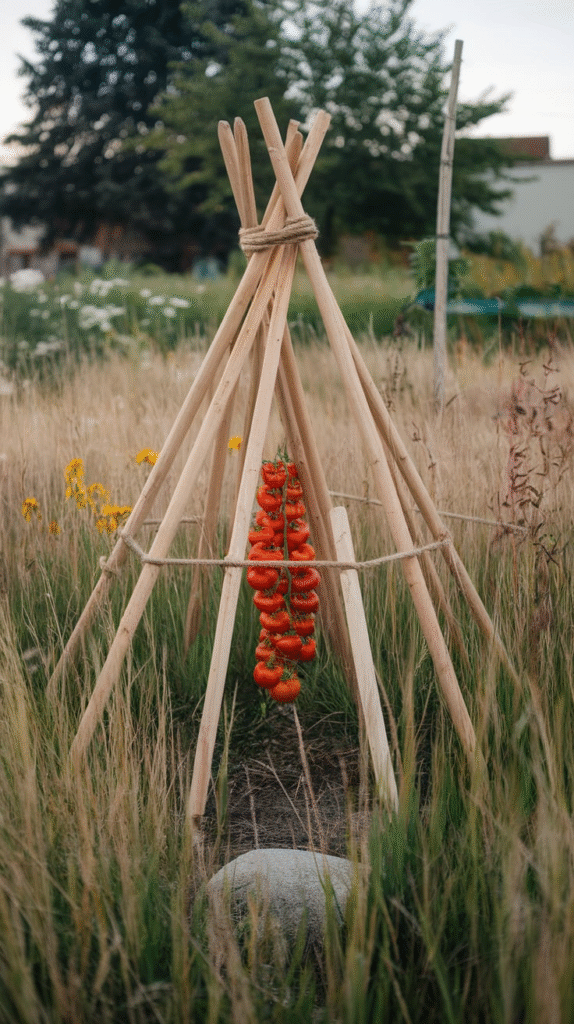
Sometimes, old-school wins the race.
Grab three or four sturdy wooden stakes, drive them into the soil around your tomato plant, and tie the tops together with twine or wire. You’ve got a stable, teepee-style cage that’s easy to build and strong enough for heavy harvests.
Use hardwood or treated lumber if you want these to last season after season.
2. Concrete Reinforcing Wire Cage
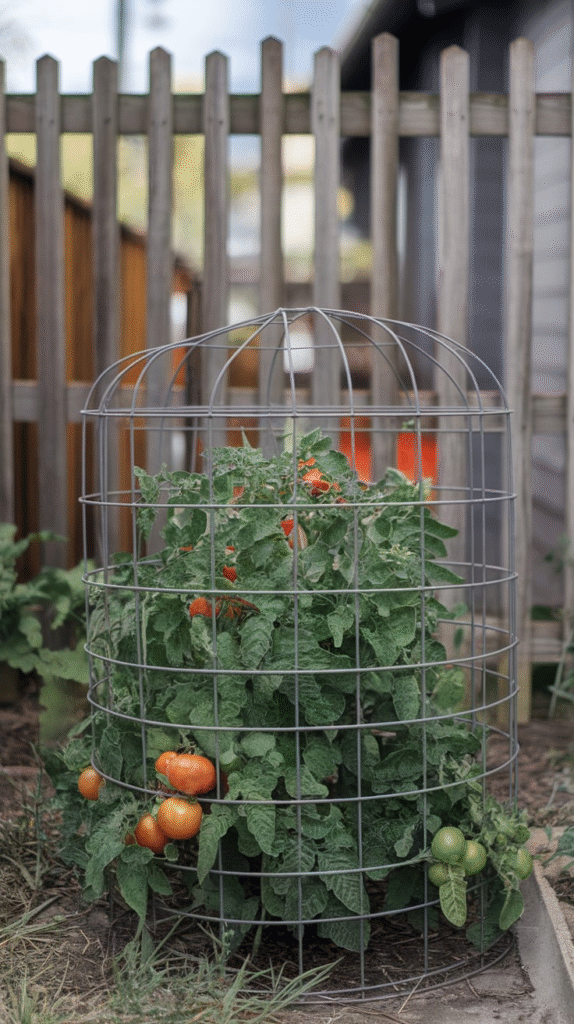
This one’s a classic for a reason. Head to the hardware store, pick up a roll of concrete reinforcing wire mesh, cut it into panels, and roll them into a cylindrical cage.
The spacing between the mesh is ideal—big enough to reach through and pluck tomatoes, yet small enough to support heavy vines. Just be ready to wrestle with wire cutters.
Pro tip? Rust-proof it with spray paint if you want it to look sleek and last longer.
3. PVC Pipe Frame Cage
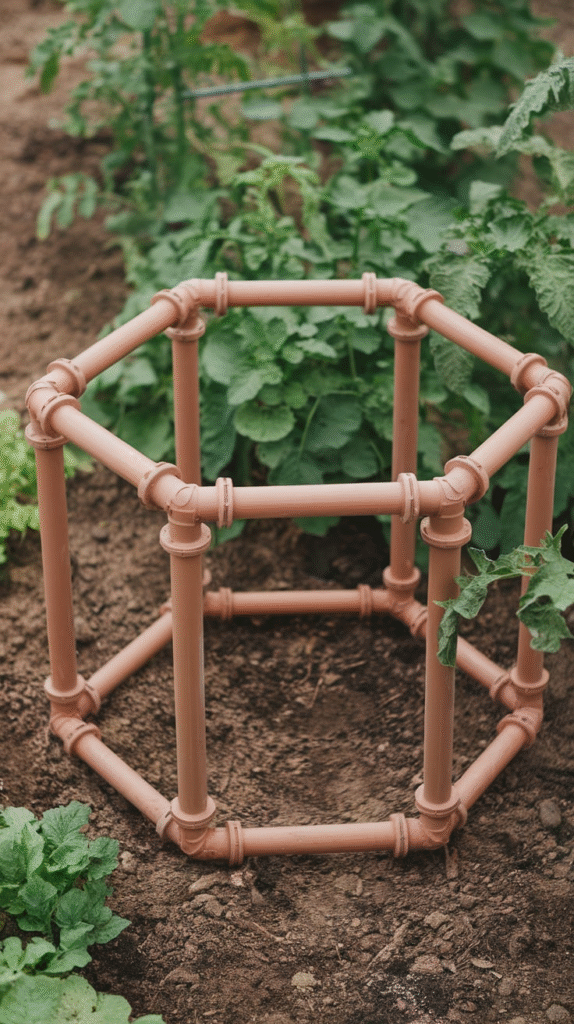
If you’ve got some leftover PVC pipe from a home project, don’t toss it—transform it into a tomato fortress.
Cut the pipes into four vertical pieces and connect them with horizontal bars using T-joints and elbow joints. The result is a square or rectangular tower that’s lightweight, easy to clean, and reusable year after year.
You can even wrap some garden netting around the sides to give vines extra grip.
4. Bamboo Stick Cage
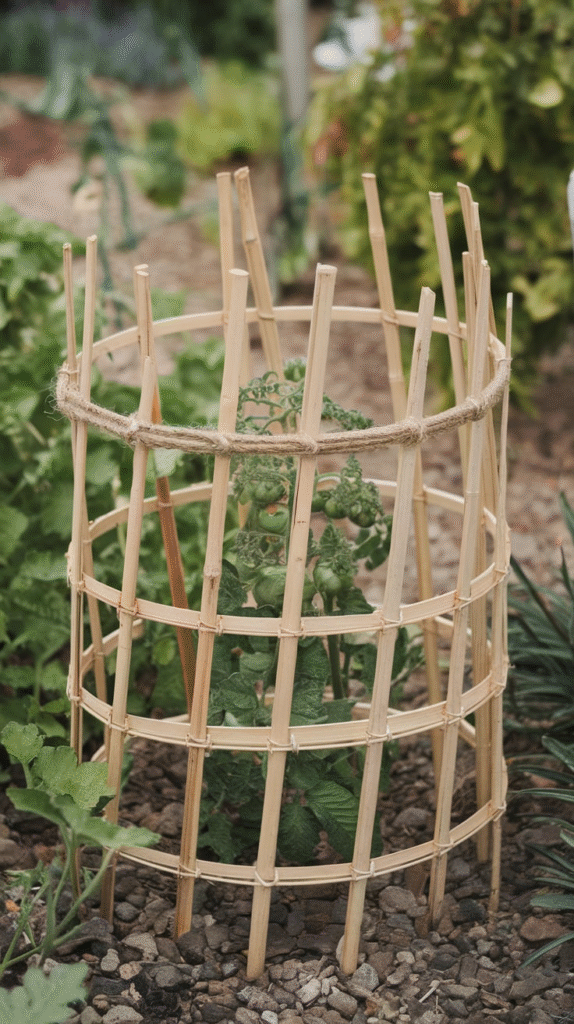
There’s something charming about natural bamboo standing tall among the tomatoes.
Stick four bamboo poles in a square around your plant, and tie them together with twine in a crisscross pattern as the plant grows. It’s biodegradable, sustainable, and looks like it came out of a Zen garden.
Just remember—cheap bamboo splits easily. Get thick, sturdy ones.
5. Ladder-Style Tomato Cage
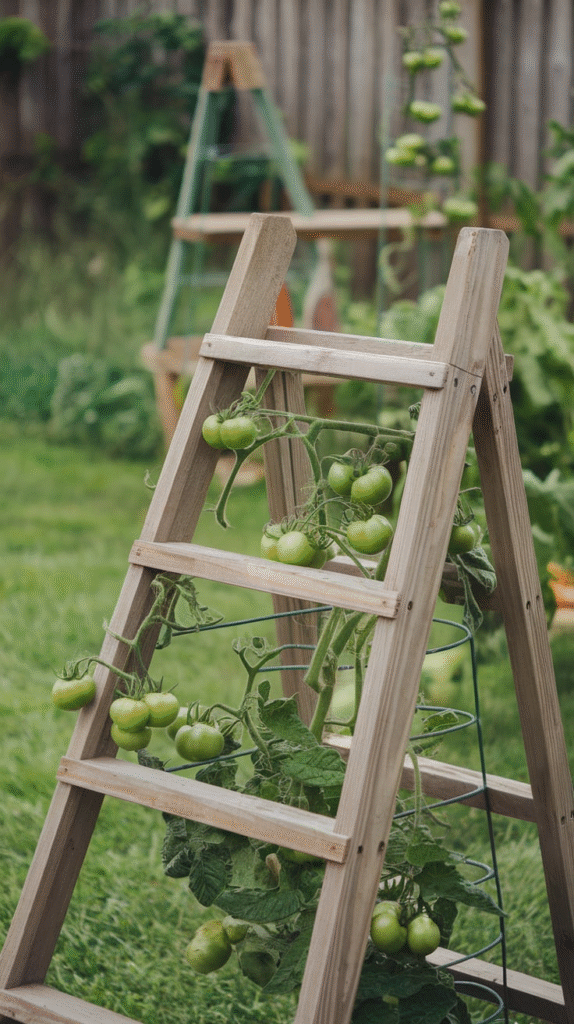
Got an old wooden ladder that’s a little too rickety to climb? Don’t toss it—repurpose it as a tomato support.
Open it, place it over a tomato plant, and let the vines climb up like a green waterfall. This idea works especially well if you’re growing tomatoes in a raised bed or containers.
You can even hang a basket of herbs from the top for that rustic garden flair.
6. Cattle Panel Tomato Tunnel
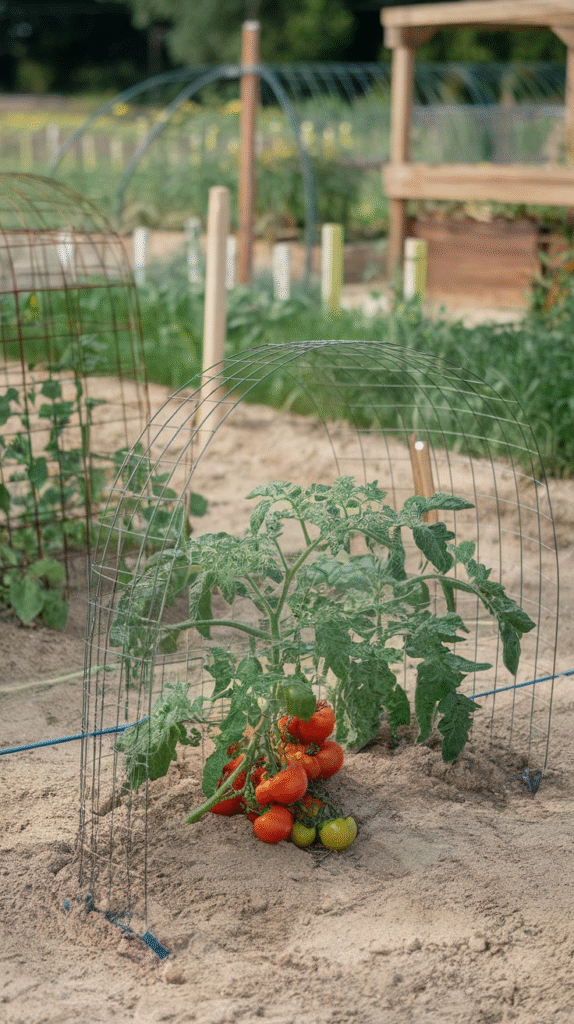
If you want to go big—like, farm-style big—get yourself a cattle panel and bend it into an arch between two garden beds. Plant tomatoes on both sides, and soon, you’ll have a leafy, fruit-laden tunnel.
Not only does it support your plants, but it also becomes an Instagram-worthy garden feature.
Plus, walking under ripening tomatoes feels like passing through a sacred fruit temple.
7. Recycled Pallet Cage

Here’s where my inner thrifty side shines.
Disassemble an old wooden pallet, use the slats to create a square frame around your tomato plant, and reinforce it with extra stakes or screws.
You can build stackable sections, allowing the cage to grow along with your tomato. Perfect if you want something modular, rustic, and budget-friendly.
8. Trellis and Twine Cage
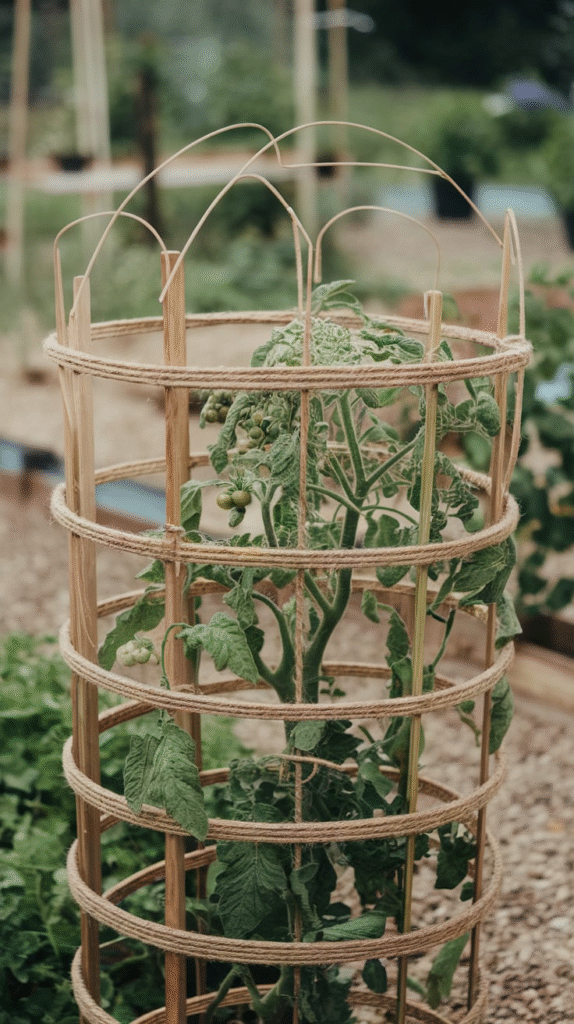
This method uses two upright trellises on either side of your tomato row. As your plants grow, use twine to tie them back or create a zigzag pattern for vines to cling to.
I like to call this the “clothesline method”, and trust me—it works great for indeterminate tomato varieties that grow tall and wild.
Plus, it’s easy to prune and harvest this way.
9. Tomato Tower with Chicken Wire
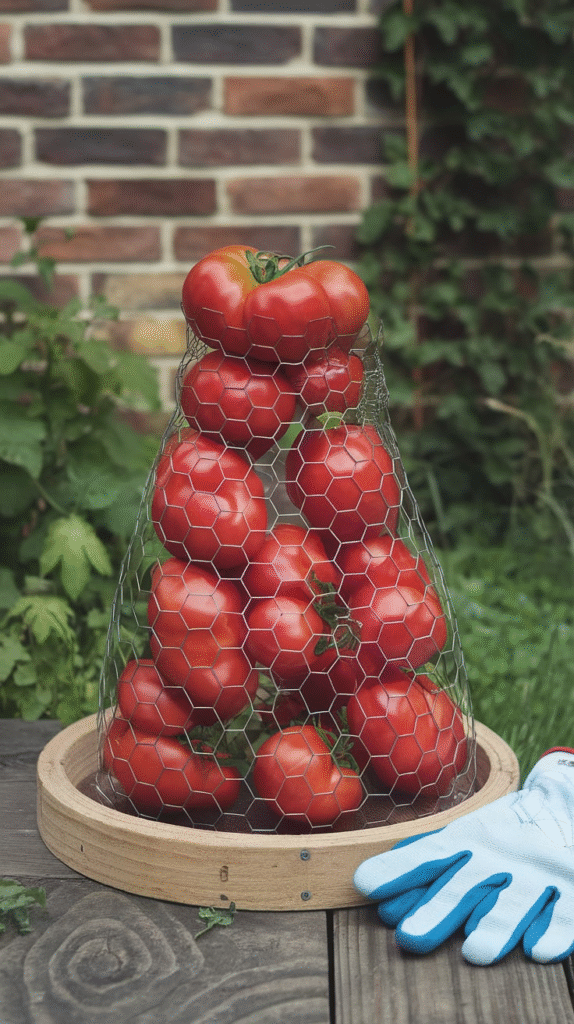
I had some leftover chicken wire from a chicken coop project, and it turned out to be the perfect cage material.
Form a cylinder using the chicken wire and secure the ends with zip ties. Use wooden stakes inside the cage to anchor it in the soil.
It’s lightweight but strong enough to keep plants upright. You might need gloves, though—that wire bites.
10. Upcycled Bicycle Wheel Cage
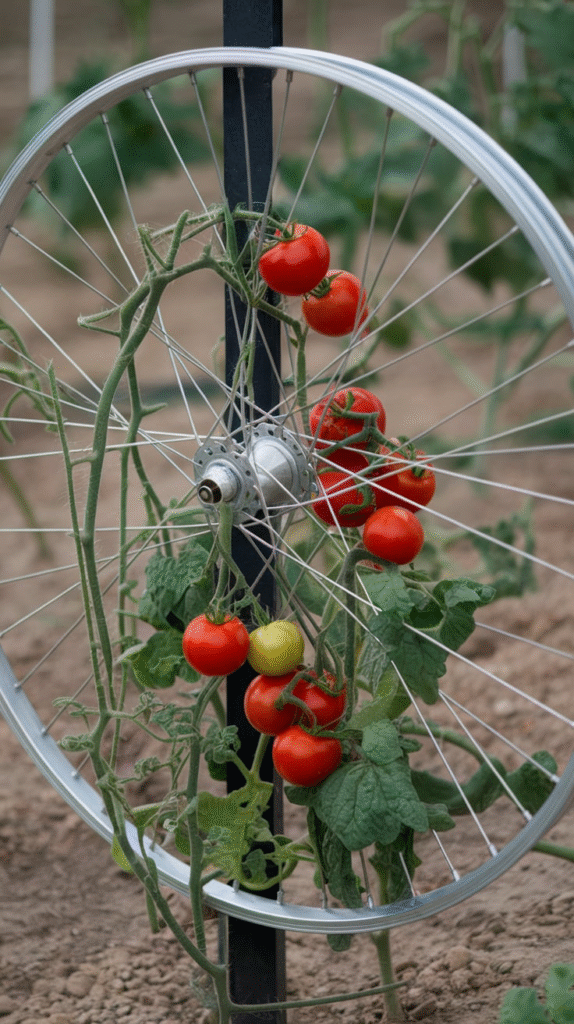
This one’s for the quirky creatives.
Use old bicycle wheels as horizontal supports between wooden or metal stakes. Drill holes through the rims and thread them onto vertical supports at different heights.
The result? A circular cage that’s functional and unexpectedly artistic.
I once saw a setup like this at a community garden, and it stopped me in my tracks.
11. Garden Obelisk Tomato Cage
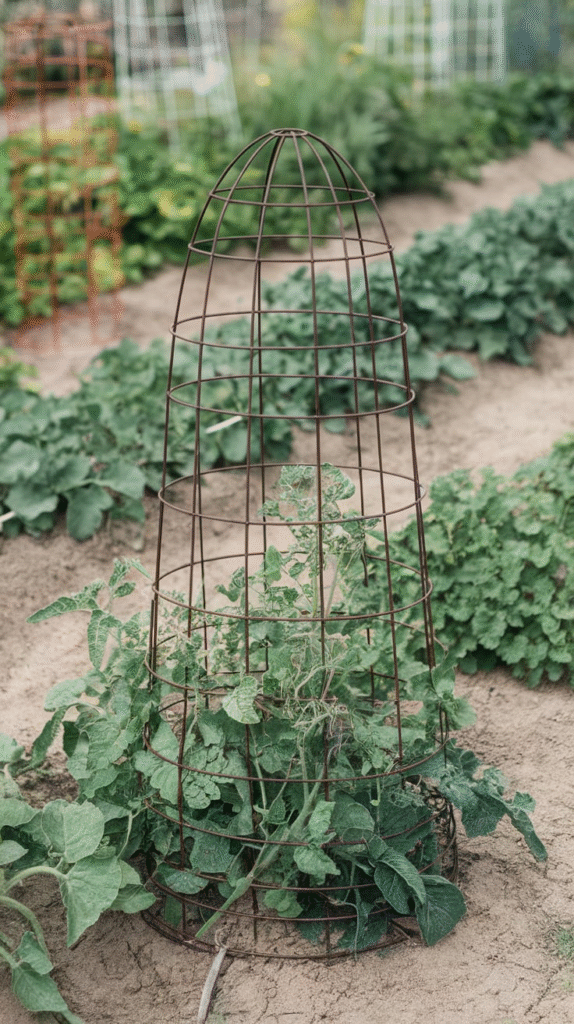
Feeling fancy? Build a garden obelisk out of wood slats or metal rods. It’s a tapered structure with multiple crossbars, perfect for supporting tall tomato varieties.
Obelisks look elegant and blend well with formal gardens. Plus, you can use them to support flowers or cucumbers next season.
Add a little finial at the top if you want to feel like a tomato-growing monarch.
12. Wire Coat Hanger Tomato Frame
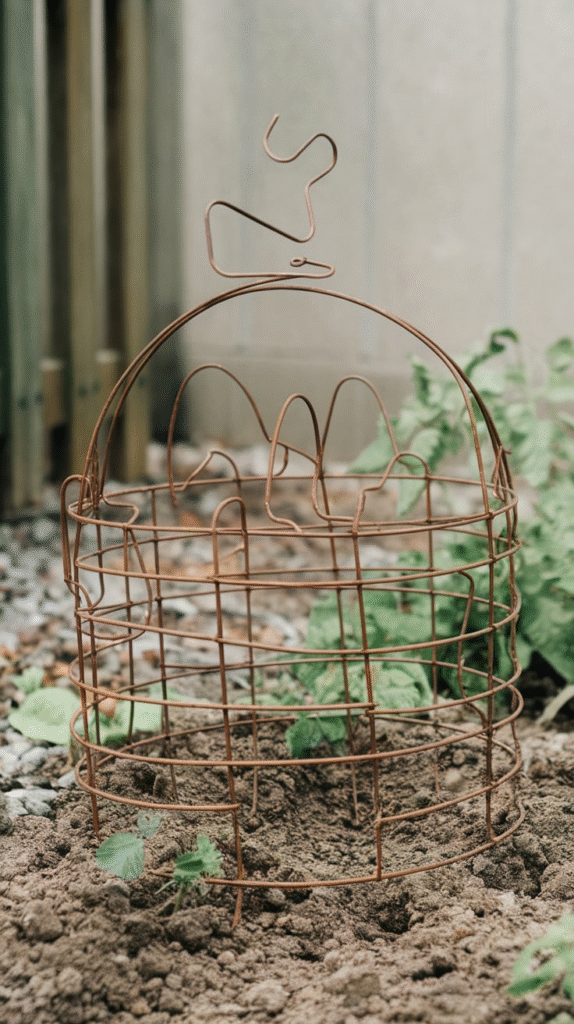
In a pinch one summer, I raided my closet for a few old wire hangers. Twisting and shaping them into a rough cage took time—but it worked.
This isn’t the sturdiest option, but for small container tomatoes or cherry varieties, it’s a great zero-cost solution.
It’s also a fun DIY for kids who want to help out.
13. Barrel Ring Tomato Cage
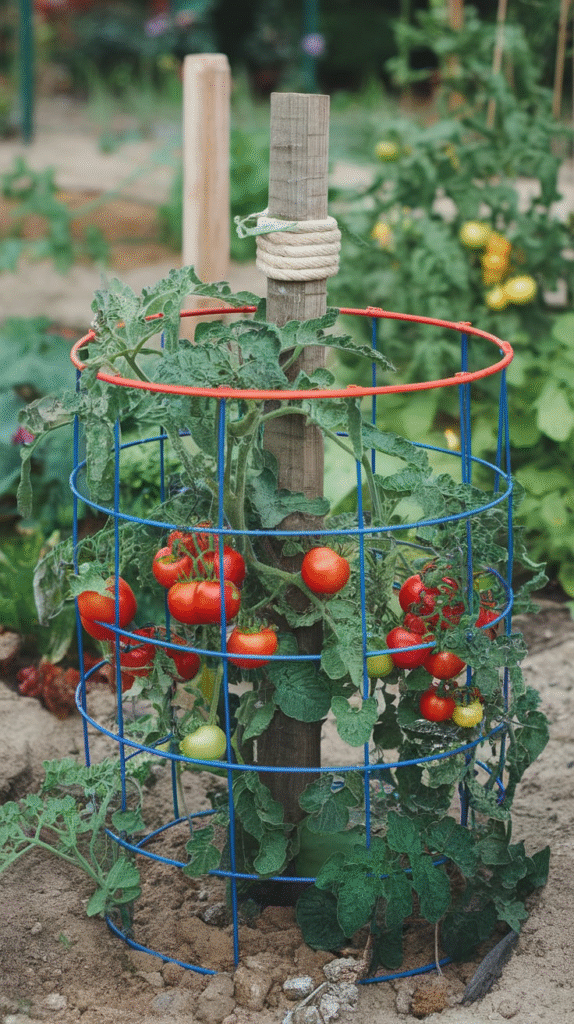
Ever seen those rusty rings from old barrels lying around? I’ve turned them into circular supports by attaching them to stakes at different heights.
They’re perfect for heavy plants and create a vintage-industrial garden vibe. Plus, they’re sturdy as heck.
Scour junkyards or old barns for these. They’re garden gold.
14. Hog Panel Tomato Wall
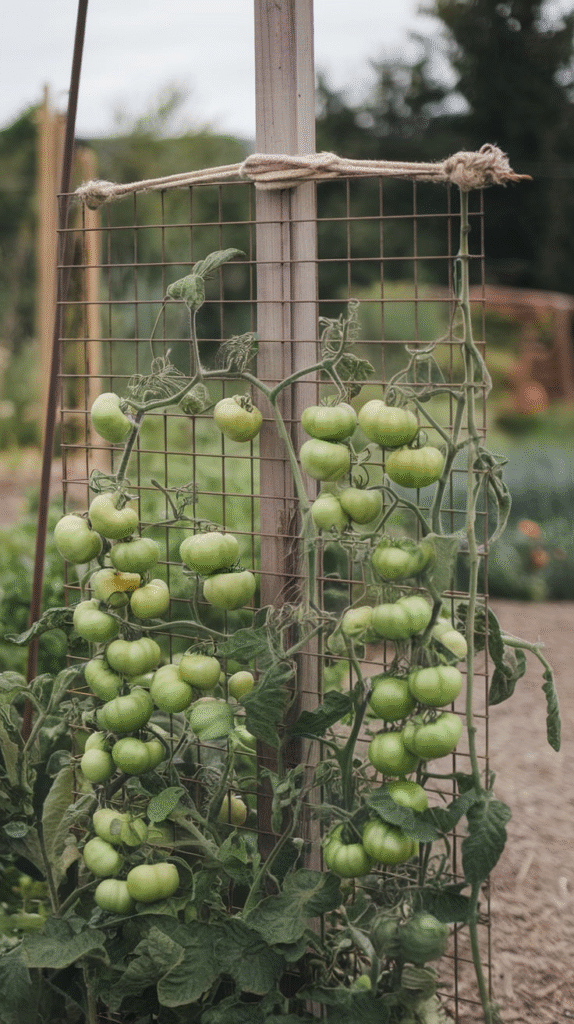
Hog panels are similar to cattle panels but sturdier. Stand one upright between two posts, plant your tomatoes along it, and start tying vines as they grow.
The grid pattern lets you easily thread vines through and keeps everything neatly in place.
This is especially helpful if you’re growing multiple tomato plants in a row and want a tidy, walkable setup.
15. Tomato Cage From Tree Branches
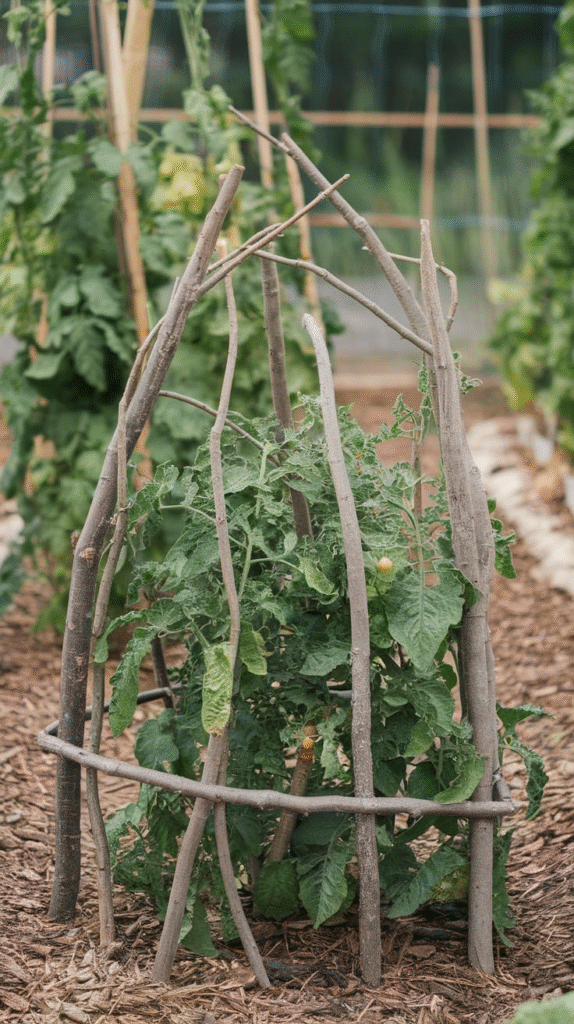
After a storm knocked down half a tree in my yard, I saved the thicker, forked branches—perfect for rustic garden projects.
Stick four of them into the ground and connect them with twine. The natural forks make great built-in tomato supports.
It looks whimsical, blends with the earth, and turns garden waste into something beautiful.
16. String and Frame Cage
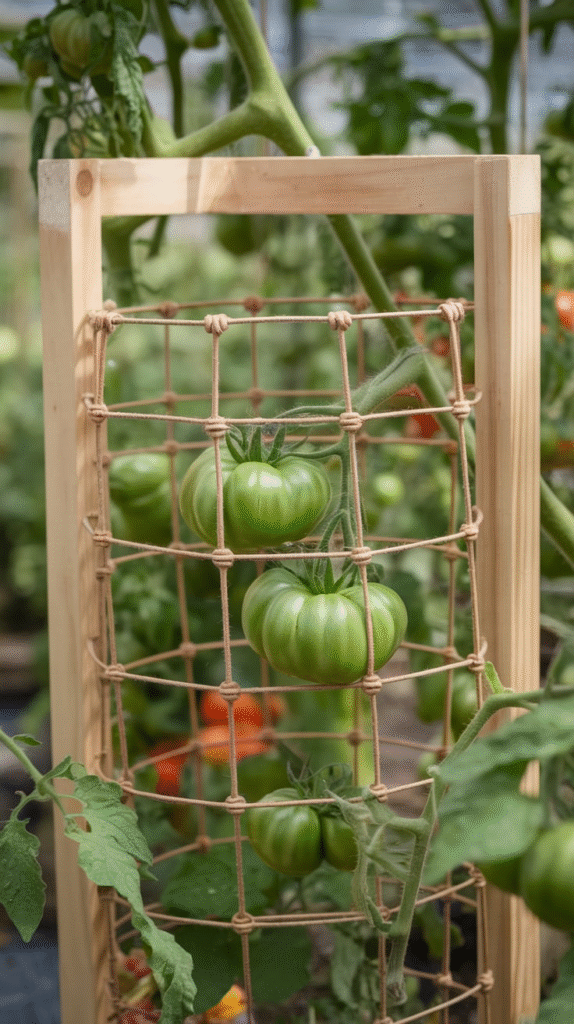
Create a rectangular wooden or metal frame, and string vertical lines of twine from top to bottom. Guide your tomatoes up the strings as they grow.
I call this my “tomato harp.” It’s delicate-looking but effective, and gives a modern, minimalistic vibe.
This works best with indeterminate types and light pruning techniques.
17. Collapsible Wood Panel Cage
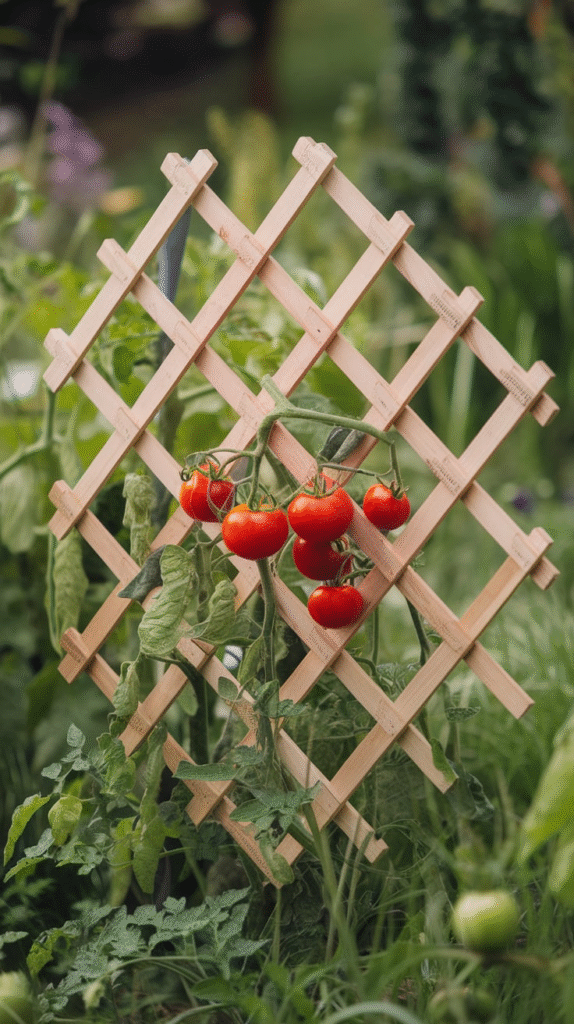
Build several rectangular wooden panels with horizontal slats, hinge them together to form a square, and place them around your tomato plant.
The best part? You can fold them flat at the end of the season. Space-saving and efficient.
Use cedar or redwood if you want durability without chemical treatment.
18. U-Shaped Rebar Tomato Cage
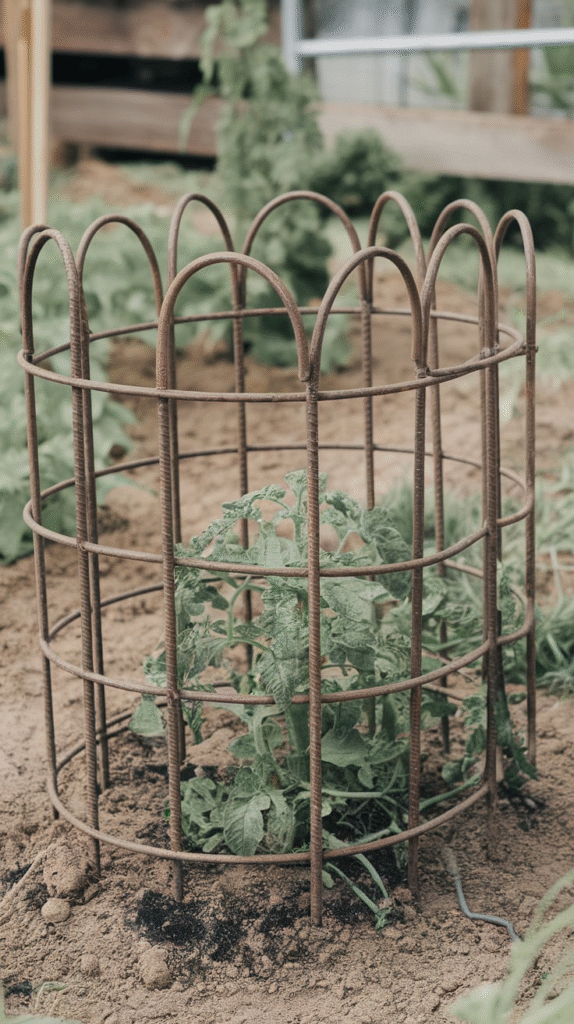
Rebar isn’t just for construction—it’s excellent for gardens too.
Bend pieces of rebar into U-shapes, and insert them into the ground in a circular pattern around your tomato. Tie them together at the top, teepee-style.
It’s strong, weatherproof, and cheap if you’ve got a hardware hookup.
Conclusion
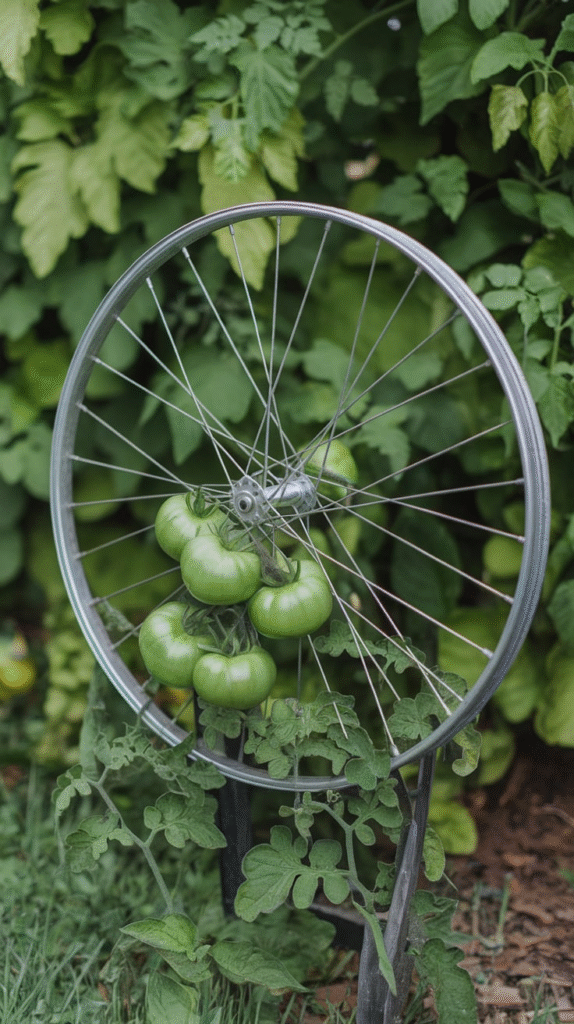
Choosing the right DIY tomato cage isn’t just about supporting plants—it’s about choosing what works for your space, your time, and your aesthetic.
If you’re tight on space, go vertical with PVC frames or string cages. Want something rugged? Try rebar, pallets, or cattle panels. Prefer a little artistry? Bring in bamboo, ladders, or bicycle wheels.
My biggest advice? Don’t wait too long to cage your tomatoes. It’s like putting up a tent in a storm—you’ve got to do it before the winds of growth pick up.
And remember, cages aren’t just for support—they’re for maximizing your harvest. A well-supported tomato plant gives more fruit, ripens faster, and stays healthier all season.

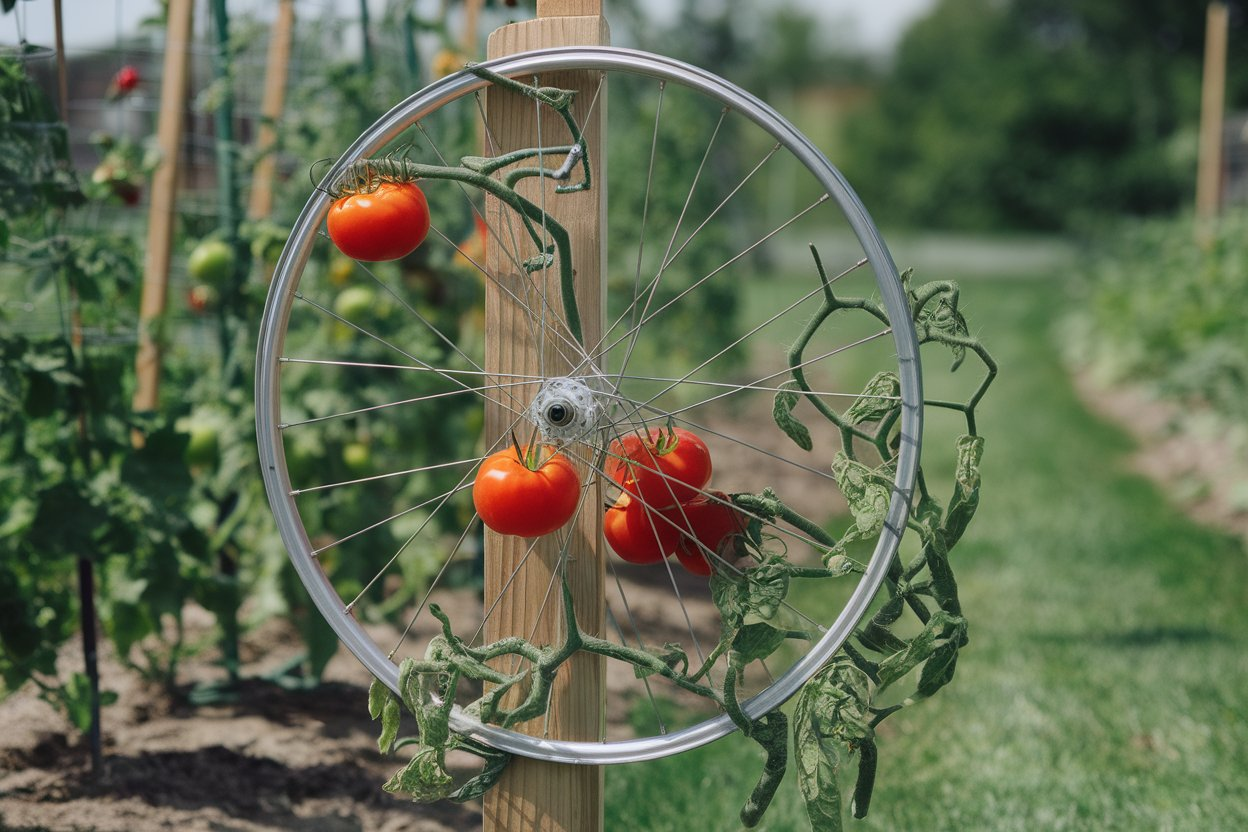
Leave a Reply